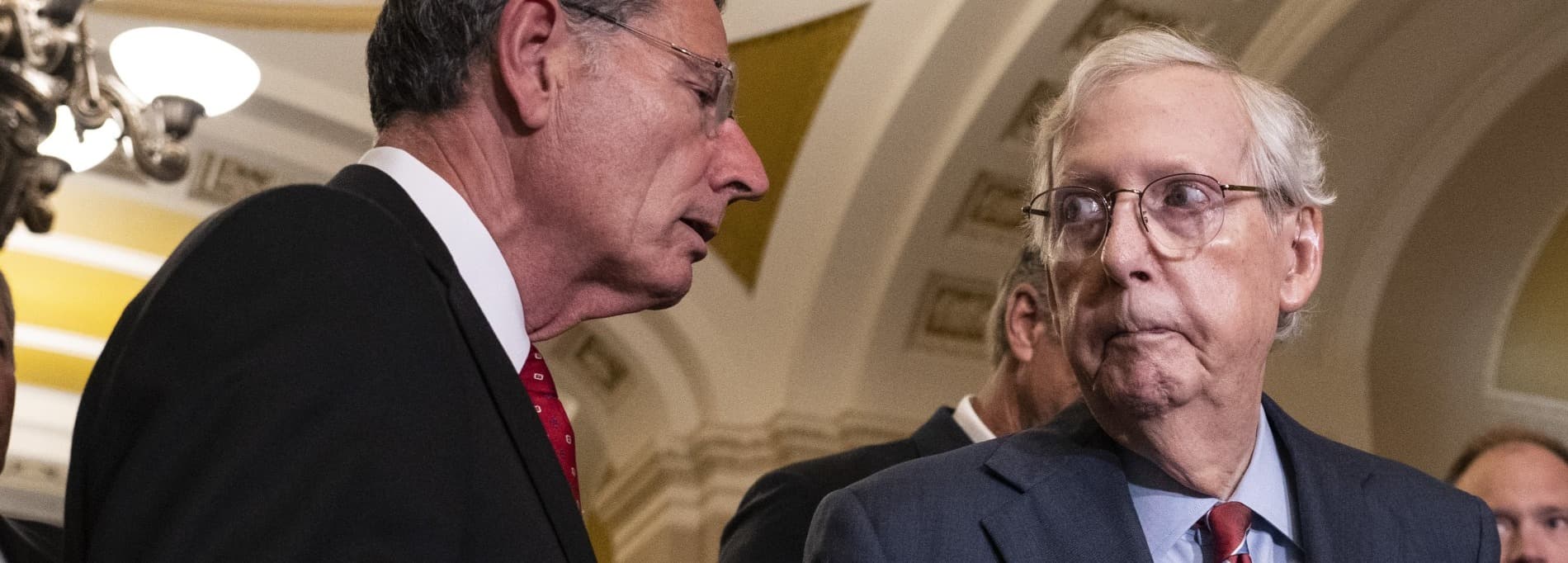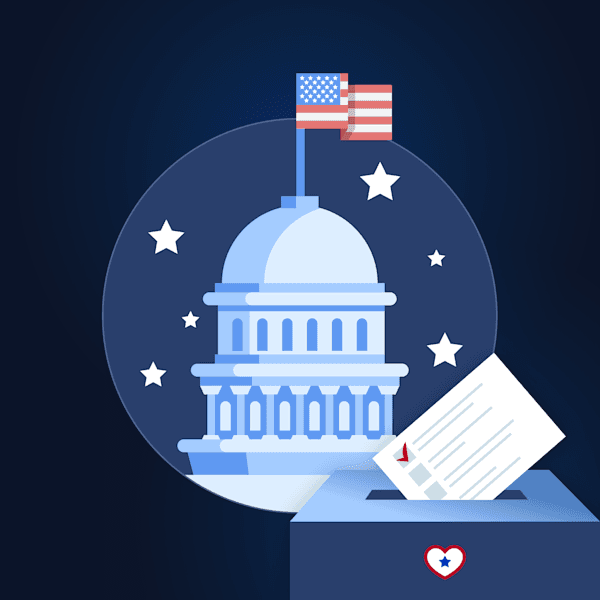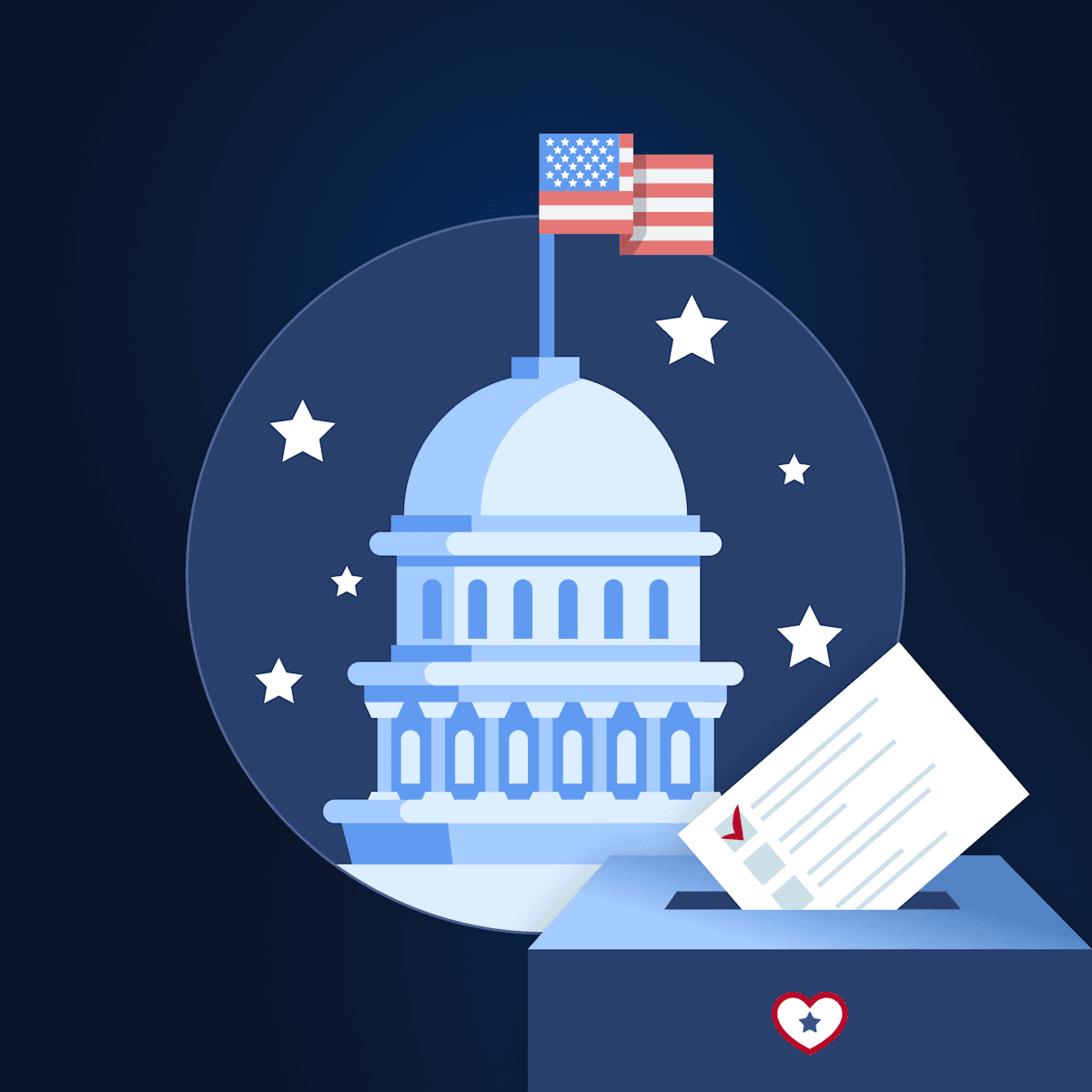
Gerontocracy in U.S. Politics: The Challenges of an Elderly Political Class
Recently, elderly politicians have been making headlines for their freezes and memory lapses. Two weeks ago, 81-year-old Senate Minority Leader Mitch McConnell froze mid-sentence in the middle of a press conference. Less than 24 hours later, 90-year-old Senator Diane Feinstein experienced a moment of confusion and had to be prompted to vote during a Senate Appropriations hearing. Since these events, online searches for the term “gerontocracy” have spiked, according to Google Trends.
Gerontocracy is a form of government that involves rule by the elderly. In a gerontocracy, leaders and politicians are older than the majority of the population they serve. They also often hold more traditional views. With an aging Congress and the United States’ oldest president to date, many have pointed out the dangers of an increasingly gerontocratic system.
The State of the American Gerontocracy
Just how old is the United States’ political class? Comparing recent presidents and the members of Congress with the rest of America can shed light on the state of our government.
President Joe Biden is the oldest American president to serve in office, now at 80 years old. If Biden wins reelection in 2024, he will have turned 86 by the end of his second term. Former President Donald Trump is the second-oldest president after Biden. Trump was 70 years old at the time of his inauguration. Trump is now 77 as he seeks reelection.
As for Congress, a look at the generational profiles of the House and Senate reveal a startling disparity. Members of the Silent and Boomer generations (those born before 1964) make up 50% of the U.S. House of Representatives and 74% of the U.S. Senate. The same groups represent just 33% of the total adult population in the United States.
Meanwhile, Millennials make up 28% of the U.S. adult population, but only 12% of the House and 3% of the Senate. The members of Generation Z (those born after 1997) have only recently come of age to become members of Congress. Maxwell Frost, a Democratic Representative from Florida, became the first Gen Z member of Congress at age 26.
While both houses of Congress include members older than age 80, the Senate leans more heavily toward the older generations than the House. Diane Feinstein, the Democratic senator from California, is the oldest member of Congress at age 90. Senator Chuck Grassley, a Republican from Iowa, is a close runner-up. Grassley will turn 90 in September and will be 95 by the end of his current term.
Along with McConnell, other notable Congressmembers over 80 include:
Bernie Sanders, the 81-year-old independent Senator from Vermont
Nancy Pelosi, the 82-year-old Democratic Representative from California and the former Speaker of the House
Harold Rogers, the 85-year-old Republican Representative from Kentucky
Grace F. Napolitano, the 86-year-old Democratic Representative from California
The growing age of many politicians is an issue that extends across states and partisan lines.
The American Gerontocracy in Context
Before diving into the implications of the United States’ gerontocratic system, a note of context may be helpful. The problem of elderly leadership is neither unique nor new to the United States. But the record-setting ages of so many politicians can still be counted as unusual.
Looking globally, the concept of gerontocracy goes back in the Western world all the way to ancient Greece. In the city state of Sparta, the Gerousia was a council made up only of members ages 60 and above. The members of the Gerousia served for life. More recent examples of gerontocracies around the world include the Soviet Union, China, Cuba, and some African societies.
Within the United States, Ronald Reagan is the third-oldest American president, after Biden and Trump. Reagan was almost 70 at the time of his inauguration. By the end of his second term, Reagan was 77. Like Biden and Trump today, Reagan also faced questions about his age while running for reelection.
Meanwhile, the current 118th Congress is one of the oldest Congresses to lead the United States. The trajectory is not all linear, though. Since the previous Congress, the median age of House representatives has decreased slightly. The median age of U.S. Senators increased, rising from 64.8 in the 117th Congress to 65.3 in the current session.
The Impact of Gerontocracy on Younger Citizens
The rising age of the United States’ leadership has an important effect on younger demographics. With such disproportionate representation, young Americans can easily feel that the people serving them in the White House and Congress are not meeting their needs.
Exploring Generational Differences
One reason for this feeling stems from the generational shifts that have taken place over the past decades. The United States is a changing society, and young citizens today tend to look, act, and believe differently than the young people of, say, the 1960s.
Here are a few ways that young people in 2023 tend to differ from their elders:
#1: Younger Americans are more likely to be racially and ethnically diverse.
According to 2020 census data, a higher proportion of older than younger Americans are white. While 77% of Americans 75 years and older are white, only about 47% of those 0-4 and 5-17 years old are white. As the United States becomes more racially and ethnically diverse, its citizens’ needs shift and change.
#2: Young voters have different priorities than older demographics.
Voters of different ages tend to view certain issues differently. A recent Pew Research study asked Americans of different ages what issue they thought should be the top priority for the president and Congress to address this year. On some issues, like reducing health care costs, 18-29 year old participants and those 65 and older expressed similar opinions. But on many other issues, the two groups revealed very different priorities.
Adults aged 65 and older named the following issues as a top priority far more often than young adults:
Defending against terrorism
Reducing crime
Reducing the availability of illegal drugs
Dealing with immigration
Strengthening the military
Meanwhile, respondents in the 18-29 age range led the way in advocating for these issues as top priorities:
Dealing with the problems of poor people
Protecting the environment
Dealing with climate change
Addressing issues around race
Older and younger generations have different priorities for government action. The disproportionate number of older Americans serving in the White House and Congress means that younger generations can have trouble making their priorities heard.
#3: More young Americans identify as politically independent.
A Gallup poll found that 52% of Generation Z and Millennials identify as politically independent — a higher proportion than that of Boomers or the Silent Generation. In fact, only 26% of the Silent Generation identifies as politically independent. This trend means that more young voters are willing to step outside of partisan politics and move toward democracy reform.
The Challenges Faced by Younger Generations
The United States’ gerontocracy poses real challenges for younger generations. As mentioned above, young Americans are both demographically and politically different from their elders. They have different policy priorities. They often take different stances on important issues such as climate, immigration, and the military. To put it simply: an elderly class of politicians cannot accurately represent the needs of younger citizens.
A poignant example of this disconnect happened four years ago, when a video of Senator Dianne Feinstein interacting with young climate activists went viral. The group of children and teenagers brought a letter to Feinstein, asking her to support the Green New Deal. Multiple members of the group made the point that if leaders like Feinstein did not act on the climate crisis quickly, it would be young people like them who would have to live with the consequences.
Feinstein rebuffed the activists’ requests. The elderly senator pushed back against the members’ calls to listen to her constituents by saying, “You didn’t vote for me.” Of course, the group could not have voted for her, being under 18. But as one 10-year-old activist retorted, “It doesn’t matter. We’re the ones who are going to be impacted.”
The scene raised a powerful question, one the political system has yet to answer. How can older politicians respond to the needs of younger citizens, especially when the decisions they make today have long-lasting consequences? Is it fair that many of the people making decisions on long-term issues such as climate won’t be around to experience the consequences of their actions, while others who had less political power at the time will live to endure them?
A long-term view is needed to reconcile the differences between the nation’s oldest and youngest generations.
Young Americans are also at a disadvantage because they often cannot run for office. Many political offices have minimum age requirements, barring entry to younger leaders. U.S. senators must be at least 30, and House representatives must be at least 25. Many state legislatures have similar age requirements. Even once young people are old enough to run for office, age-related prejudices can be another barrier to getting elected.
Finding Solutions: The Importance of Intergenerational Cooperation
Intergenerational cooperation may be the key to resolving the United States’ generational divide. Older and younger generations need to work together to ensure that all citizens’ needs are met. This means that people of all ages can work toward solutions.
Below are a few important avenues for bridging the gap between generations and ensuring fairer representation:
#1: Increase youth voter turnout.
One of the most powerful ways to enhance representation for younger generations is to increase voter turnout. During the 2020 presidential election, voter turnout increased linearly with age. More members of older generations turned out to vote than members of younger generations. In fact, voters ages 65-74 saw the highest turnout rate at 76%. The group with the lowest voter turnout rate was those ages 18-24, at 51.4%.
In both presidential and local elections, it is critical for young people to take the time to vote. There is no better way for young Americans to be a part of societal decision-making.
#2: Impose term limits and other political reforms.
Term limits are one kind of reform that members of different generations can agree on. The United States has term limits for the office of president, but not for members of Congress. The lack of term limits allows some members of Congress to spend decades working on Capitol Hill. This is how Chuck Grassley has served in the Senate for 42 years and counting. Mitch McConnell, likewise, has served 38 years in the Senate.
Imposing term limits on members of Congress would make room for younger, fresher faces to take the places of older Congressmembers. Recent polling finds that Boomers and members of Gen Z actually align on the importance of this reform. Of those surveyed, 70% of Boomers said the House of Representatives should have term limits, and 72% want term limits for the Senate. Similarly, the vast majority of Boomers, Generation X, Millennials, and Generation Z all agreed that the current age of political leaders is a problem.
#3: Encourage effective communication and listening.
Another practical step toward intergenerational cooperation is to foster more effective communication. To cooperate, the generations must be in dialogue with one another. This can look like members of different generations coming together to solve local issues. It can look like young people contacting their representatives and ensuring their voices are heard. It can even look like seeking to understand the unique perspectives of other generations.
All Americans should have a say in societal decision-making. Listening to and respecting one another is a crucial first step toward that goal.
Conclusion
The United States’ current state of gerontocracy poses a real danger to younger generations. Without effective representation, the concerns of younger citizens are often brushed aside by older political elites. As both the nation’s presidents and members of Congress get older, Americans need to stand up for change and more equitable representation. To become a part of the movement for political reform, explore GoodParty.org’s free resources and community.

